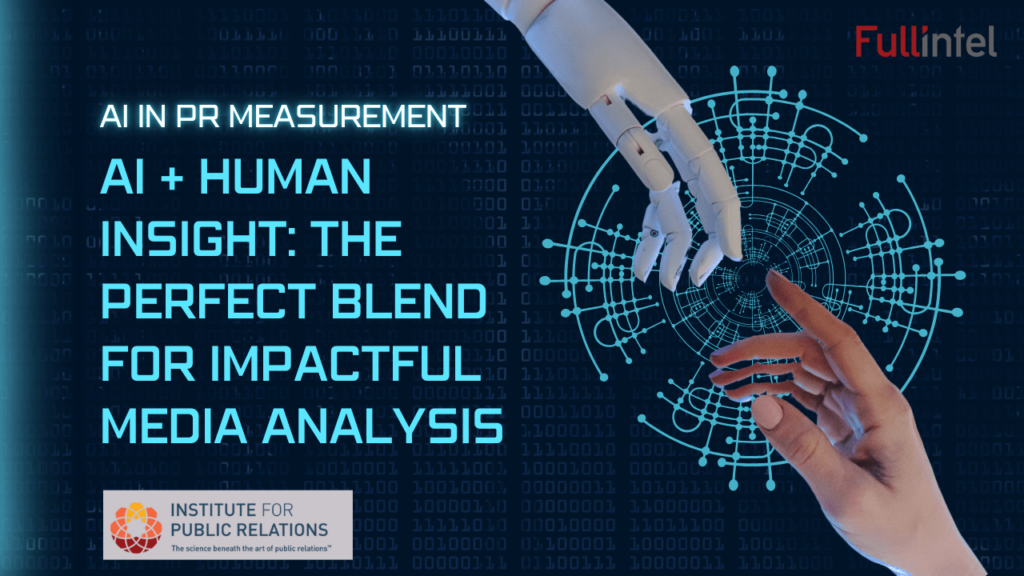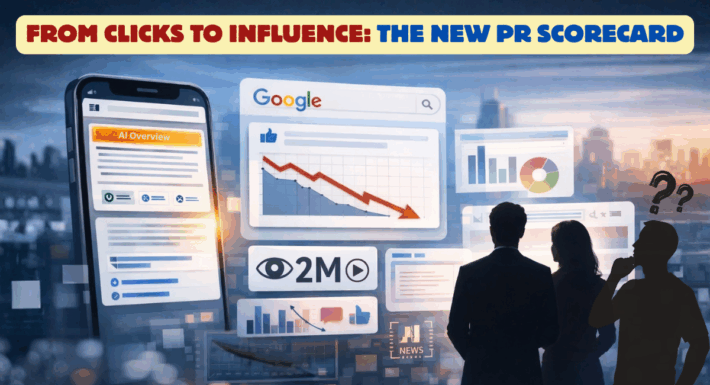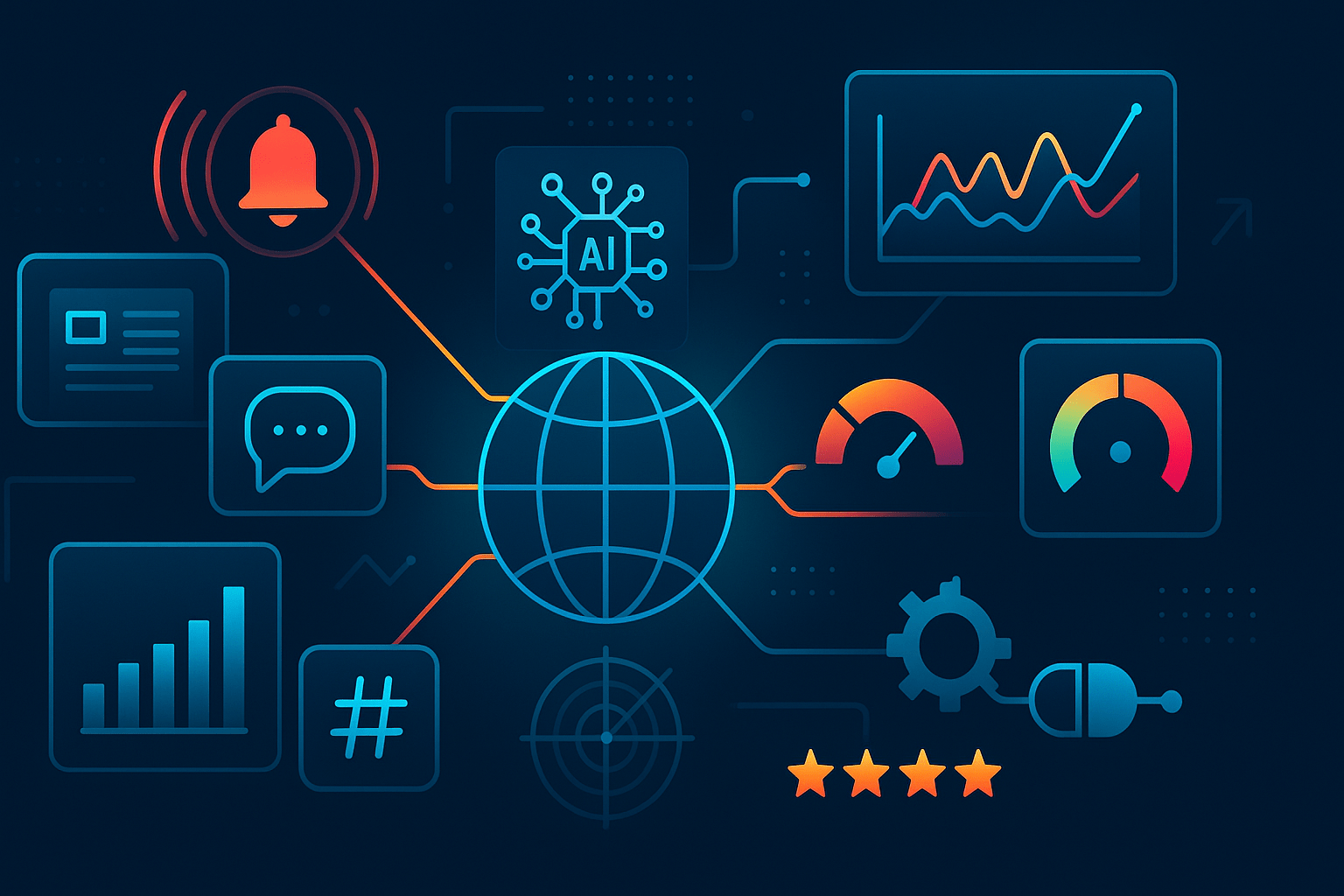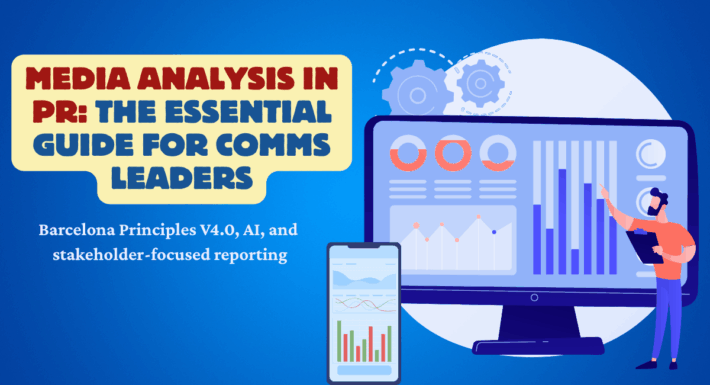AI vs Human PR Measurement: 85% vs 59% Accuracy Rates – When to Choose Which Approach

Accurate media analysis drives successful PR strategies and measures audience impact. While AI can process vast content volumes in minutes – reducing trend identification from hours to minutes – the question isn’t whether to use AI or humans. It’s knowing when each approach delivers better results.
After leading media measurement teams for 15+ years, I’ve learned that strategic combinations of AI efficiency and human insight accelerate analysis while maintaining accuracy. This human-in-the-loop approach leads to better decision-making and more impactful communication strategies.
Performance Data: AI Speed vs Human Accuracy in Media Analysis
Research shows clear performance differences:
- Human sentiment coding accuracy: 85%
- AI sentiment coding accuracy: 59%
- AI processing speed advantage: 100x faster than humans
- Time reduction with AI: 40% faster analysis completion
The lesson: Use humans where accuracy matters most, machines where speed and scale are crucial.
6 Decision Factors for Choosing AI or Human Media Analysis
1. Crisis Communication AI Response Time vs Strategic Analysis AI excels in crisis situations requiring immediate response. For strategic decision-making that informs senior leadership, human analysis provides necessary depth and context.
2. Data Volume and Media Monitoring Scale Massive datasets suit AI processing. Manageable volumes benefit from human insight and nuanced interpretation.
3. Healthcare PR Sentiment Analysis Accuracy Requirements Complex industries like healthcare and financial services require human understanding of regulations, policies, and industry-specific terminology.
4. PR Agency Media Measurement Tools Selection Consider your audience’s needs. If analysis must resonate with specific demographics or requires cultural context, human coders deliver better results.
5. Media Monitoring False Positives Reduction High-stakes business decisions justify human analysis time and resources. The difference between noise and news requires contextual understanding.
6. Earned Media Valuation and Attribution Modeling Straightforward, data-driven analyses suit AI. Abstract subjects requiring emotional intelligence need human analysts.
Best Practices: Human-AI Collaboration in PR Measurement
Most effective approaches combine both:
- AI handles: Initial data collection, aggregation, basic sentiment analysis
- Humans provide: Contextual understanding, sentiment refinement, key opinion leader evaluation
- Ongoing requirement: Regular accuracy audits of automated tools
Media measurement extends beyond mention counting. It requires understanding who speaks, their influence level, and engagement quality. Human curation remains vital for assessing source credibility and impact.
AI Transparency and Disclosure Policies in PR
Organizations must implement AI usage policies and introduce transparency into AI models. This builds trust with audiences through:
- Higher data standards and documentation
- Measurement and auditing of AI functions
- Human oversight and ongoing monitoring
- Clear disclosure of AI-assisted analysis
“Almost every leading organization will have AI policies adhering to these standards,” explains Converseon founder Rob Key, IPR Measurement Commission member.
PR Measurement ROI Calculation: AI and Human Collaboration Results
Our Anvil Award-winning platform demonstrates this approach. By prioritizing precision and eliminating false positives, we alert clients to what matters – not just what mentions them. This human-AI collaboration delivers measurable results across industries, particularly healthcare and pharmaceuticals.
Frequently Asked Questions: AI in PR Measurement
What is the accuracy difference between AI and human sentiment analysis?
When should PR teams choose AI over human analysis?
How much time can AI save in media measurement?
What are the best practices for combining AI and human analysis?
Why do AI disclosure policies matter in PR measurement?
How does topic complexity affect AI vs human analysis choice?
AI vs Human Media Analysis: Performance Comparison
| Factor | AI Advantage | Human Advantage |
|---|---|---|
| Processing Speed | 100x faster execution | Deep contextual review |
| Accuracy Rate | 59% sentiment accuracy | 85% sentiment accuracy |
| Data Volume | Unlimited scale processing | Quality over quantity focus |
| Crisis Response | Immediate analysis | Strategic crisis planning |
| Industry Expertise | Pattern recognition | Regulatory understanding |
| Cost Efficiency | Lower per-analysis cost | Higher ROI on key decisions |
Conclusion: Trusted AI in PR Measurement
Integrating human expertise with AI automation delivers comprehensive, reliable media measurement. Organizations that combine trusted human analysis with advanced AI capabilities provide both quality and speed.
The future requires transparent AI usage supporting informed decision-making. By building trust in AI technologies while leveraging human insight, organizations maximize technology potential while protecting against biases and inaccuracies.
This approach leads to more informed, impactful outcomes in media analysis – exactly what PR professionals need in today’s complex communication landscape.
Angela is VP of Insights at Fullintel—a media intelligence company that specializes in news monitoring and analysis. She has worked in media measurement for 15 years, helping brands improve business results through data-driven, actionable insights. From public relations agencies like Lippe Taylor to media research firms like PRIME Research, she has consulted across industries, particularly healthcare and pharmaceuticals. She has presented and published several award-winning research papers about news content that drives recall, engagement, and brand trust. Her “Trust in Pharma” research outlines how biopharma brands can build and sustain trust.
She contributes knowledge at the intersection of academia and practice as director of the International Public Relations Measurement Commission and as a member of the International Public Relations Research Conference Board. Her contributions have been recognized with multiple industry awards, including PRNEWS People of the Year (Data & Measurement Game Changer), PRNEWS Top Women (Industry Champions), and AMEC Rising Star for innovation in communication measurement.




